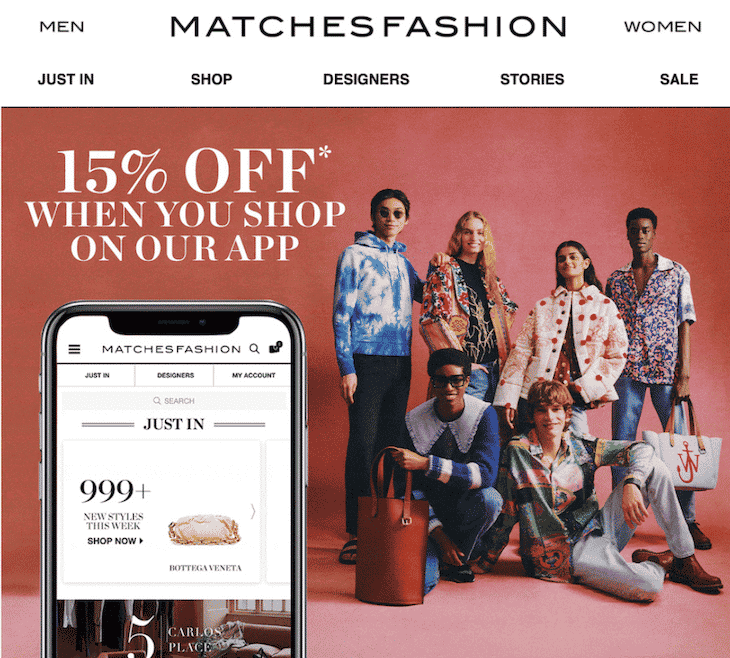Business
Omnichannel Marketing: An (Early) 2021 Year in Review
November 8, 2021

There are a lot of headlines marketers could write about 2021. But here’s the good news. The omnichannel marketing summary of this year is promising — best practices adoption is on the rise, and there’s more opportunity than ever for the future of retail. As long as you’re willing to put in the hard work.
Or, have a few more minutes to finish reading this blog.
Finally, COVID-19 restrictions are falling away and consumer spending is approaching pre-pandemic levels once again. And if that wasn’t enough to make any marketer’s holiday season a little more cheerful, our Retail Personalization Index research reveals that retailers are better positioned than ever to satisfy consumer demands for digital and omnichannel shopping experiences. Especially if you offer customer-centric omnichannel value-adds like curbside pickup, buy online, pickup in-store (BOPIS), and buy now, pay later (BNPL) options.
So, what else have we learned about omnichannel marketing’s evolution throughout 2021?
While retail focuses on elevating digital experiences, many still can up their omnichannel marketing strategy
Digital experiences and ecommerce is constantly driving new shopping behaviors, forcing retail marketers to double down on optimizing web and mobile experiences. After all, there’s a lot to consider for something that sounds so simple.
An optimized digital presence that guides shoppers from product discovery all the way through personalized content, social influence, and convenient online shopping tools to bridge the offline gap isn’t easy to establish. Meaning that for most retail marketers, there is still a significant opportunity to improve digital customer experiences in a way that boosts engagement, conversions, loyalty, and revenue.
In a perfect omnichannel world, email, social media, display advertising, and loyalty programs work seamlessly across every channel your customers interact with. You deliver engaging product and editorial content to fully showcase hot sellers, inspire engagement, and entice customers to make a purchase. When put into practice, however, this is seldom the case.

Despite a wide range of technologies available to support acquisition, retention, and overall user experience efforts, too many retailers and brands are still working on getting the omnichannel marketing basics right — and therefore are trailing behind shopper expectations.
For example, email is still your best option for customer acquisition and retention when considering cost, reliability, and overall results. Yet many brands aren’t taking advantage of these comparatively cheap, easy messages to capture valuable customer insights and refine their marketing tactics even further.
In 2021, most retailers are also prioritizing cart, checkout, and payment convenience options — both online and in-store — like never before to make shopping as frictionless and seamless an experience as possible. Innovations like BNPL, omnichannel loyalty programs, product scanning, self-checkout, and visual search have become game changers that are only just starting to catch on.
Live chat continues its customer service rise, while SMS adoption lags
An omnichannel marketing experience works best when your customer service is exceptional. After all, easy access to your experts instills shopper confidence at a time when uncertainty runs rampant and consumers seek a safe, fast, and convenient place to make their purchases.
While Live Chat adoption consistently grows across the retail space, there’s still room for improvement in how most marketers enable shoppers to easily contact customer service — from the basic inclusion of customer service information on your site to SMS communication options.
The ability to easily contact customer service is critical in ecommerce, and while the majority of retailers offer multiple customer service communication paths, there’s still plenty of room for improvement when it comes to making your audience aware of them — for example, only 27% allow customers to contact these support mechanisms via SMS.
Data privacy needs more omnichannel marketing focus
Despite the growing importance of personalized customer experiences, many organizations neglect to ensure that those satisfying interactions are accessible for every user. Even with the growing number of regulations requiring customers to maintain control of their personally identifiable information, some retailers still lack the capabilities needed to ensure their buyers can simply access, view, or delete the data they’ve submitted.
Savvy omnichannel marketing strategies are adapting by adopting (and enforcing) digital accessibility standards to ensure online stores are available and protecting as many shoppers as possible. That said, most brands still lack a publicly viewable accessibility statement somewhere on their homepage — potentially leaving the organization at legal risk on top of locking out a significant portion of the ecommerce population who is concerned about how their data is used and stored.
Retail is investing in in-store convenience and safety
Changing consumer shopping behaviors combined with a steady increase in online sales have forced retail to reinvent the in-store experience over the last year. While the pandemic certainly didn’t help to ease the pressure of driving traffic and sales through in-store shopping experiences, it did lead to a priority shift.
Instead of investing in physical experiences and community-building activities throughout 2021, retailers and omnichannel marketers across the industry have put more emphasis on reimagining their in-store footprints, serving traditional shoppers by investing in new fulfillment models, and finding new ways to build a safe physical space that encourages in-store purchases.

In working toward a true omnichannel marketing world, store associates now have easy access to product information and customer data via mobile device to engage customers and assist transactions in real-time.
In addition to empowering these in-store experts with the tools and training required to capture key data points during each purchase, retailers are working hard to provide personalized experiences that drive repeat traffic and loyalty. Our data suggests that retailers are more focused than ever on upgrading their customer service initiatives — and as the technologies and training put in place across 2021 continues to advance, this bodes well for the future of omnichannel marketing in every industry.
Overall, the adoption of in-store best practices has increased slightly, suggesting that retailers are more focused on better servicing customers and that they have put in place relevant technologies and improved associate training.
As retail rises back up from the pandemic like a phoenix from the ashes, it’s obvious that a strong digital and omnichannel strategy is necessary for future success. If you’re looking for a few high-impact, low-effort ways to improve your omnichannel marketing tactics right away, check out our Marketer’s Guide to Working Smarter Not Harder Guide before the clock runs out in 2021.
The State of Brand Loyalty in the U.S. in 2023
Related



